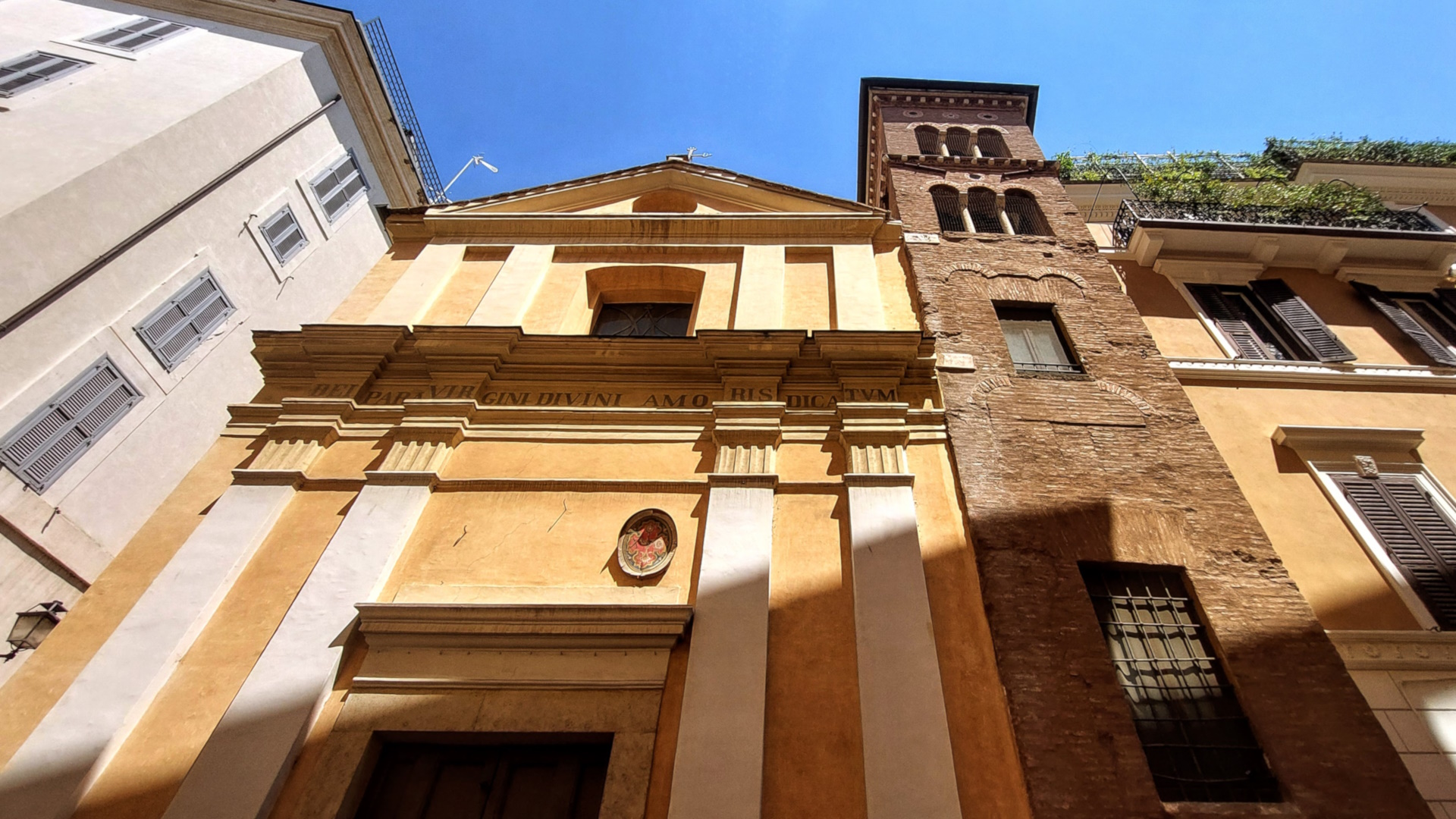
Une église petite, mais riche en histoire, dans une ruelle assez étroite à passer inaperçue : à quelques pas de la Via del Corso, en se promenant dans les rues moins fréquentées du Rione Campo Marzio, le regard est attiré par un beau clocher roman avec des fenêtres à trois meneaux, des colonnes de marbre et des disques de céramique colorée. C'est ce qui reste d'un ancien lieu de culte de la Rome médiévale, initialement dédié à sainte Cécile, car, selon la tradition, il a été édifié sur les vestiges de la maison paternelle de la martyre romaine ou sur un lieu où la sainte se retirait pour prier. De fait, l'inscription de 1131 retrouvée au début du XVIIe siècle sous le maître-autel de l'église dit : « Haec est domus in qua orabat Sancta Caecilia », « Ceci est la maison dans laquelle sainte Cécile priait ».
En 1525, le pape Clément VII concéda l'église à la Confrérie des Materazzari (matelassiers), qui ajouta à l'ancien titre celui de saint Blaise, leur patron. En 1729, sous le pontificat de Benoît XIII, l'église fut entièrement reconstruite selon un projet de Filippo Raguzzini, l'un des interprètes les plus originaux du rococo romain, auteur entre autres de l'église de la Madonna della Quercia commandée par une autre confrérie, celle des Macellai (bouchers). En 1802, étant donné la grande dévotion des Romains pour la Madone du Divin Amour vénérée dans le sanctuaire de la Via Ardeatina, Pie VII confia l'église à la Confrérie du Divin Amour, d'où dérivent les noms actuels de l'église et de la ruelle. En 1944, par crainte qu'elle ne soit détruite par les bombardements, l'icône fut transférée dans la petite église, avant d'être déplacée temporairement à la voisine San Lorenzo in Lucina, puis à Sant'Ignazio en raison de la grande affluence de fidèles.
Depuis la ruelle, l'église se présente avec une façade simple à deux ordres, conçue au XVIIIe siècle par Filippo Raguzzini. Quatre pilastres encadrent un seul grand portail central et soutiennent un entablement avec une simple inscription dédicatoire sur la frise : « Deiparae Virgini divini amoris dicatum ». Un tympan triangulaire avec un oculus central, surmonté d'une croix, termine la façade. L'intérieur de l'église se compose d'une seule nef avec une voûte en berceau décorée de fresques au XIXe siècle.
Une curiosité : entre 1604 et 1605, le grand peintre Caravaggio vécut dans l'une des maisons de la ruelle, au numéro 19 – une maison-atelier partagée avec Francesco Boneri, plus connu sous le surnom de Cecco del Caravaggio, élève, compagnon et modèle de nombreux tableaux du maître.
Sept églises sièges des confréries
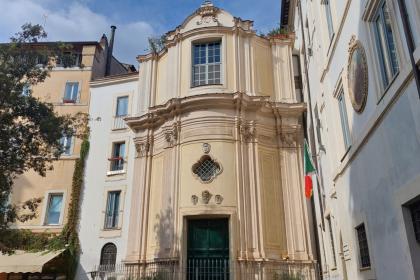
Un patrimonio di storie e tradizioni da scoprire nelle chiese delle corporazioni
Rione IV - Campo Marzio
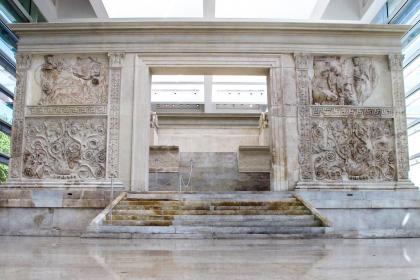
Les lieux de Caravaggio
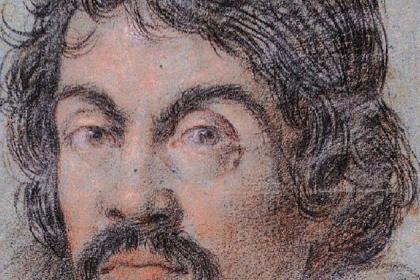
I Maestri dell'Arte: itinerari romani sulle tracce dei grandi artisti
 Condividi
Condividi
Sanctuaire della Madonna del Divino Amore (Notre-Dame du Divin Amour)
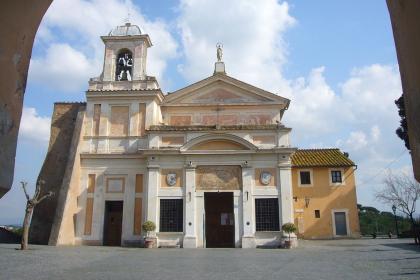
 Condividi
Condividi
Informations
Open only during religious services
 Condividi
Condividi
Location
Pour connaître tous les services d'accessibilité, visitez la section Rome accessible.











































